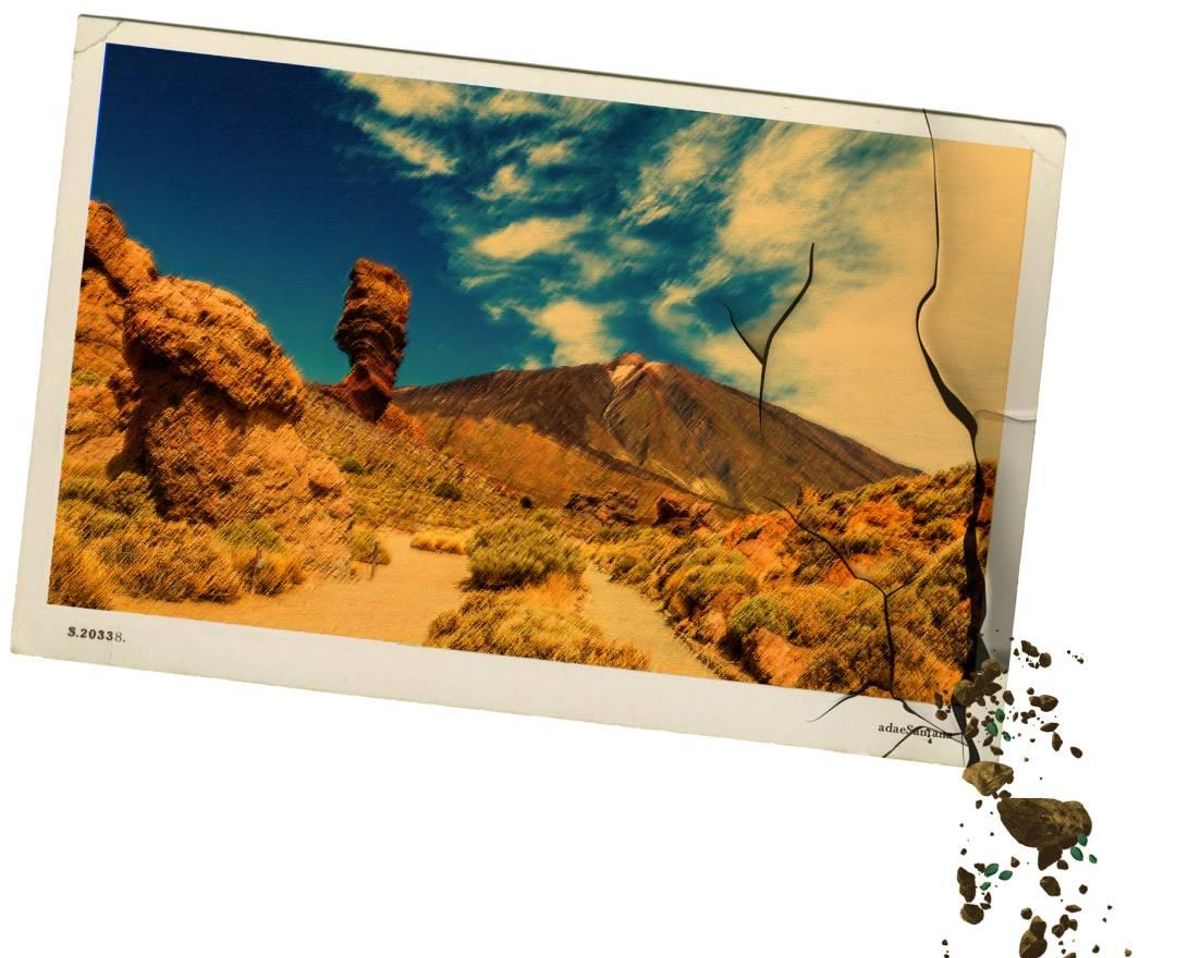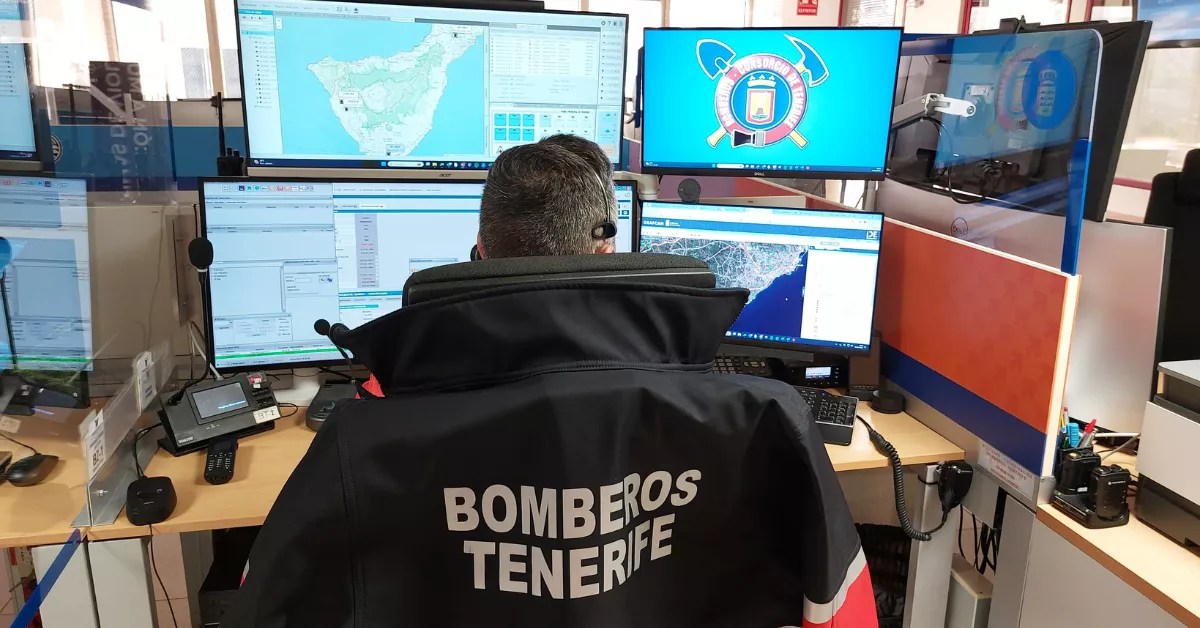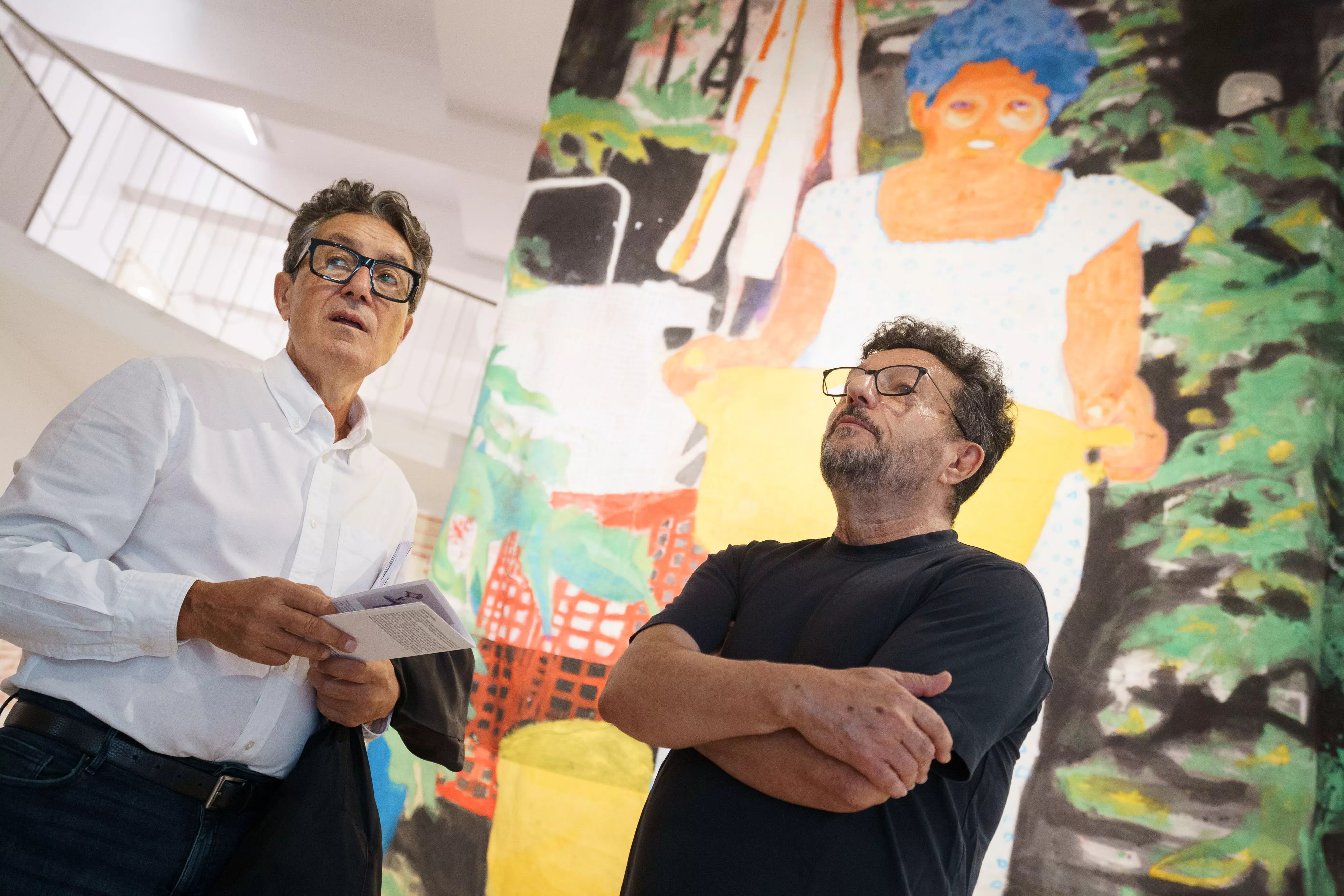Sometimes, the seemingly most harmless actions are the ones that can cause the most harm. A treasure hunt in the midst of the Maspalomas Dunes, heating lentils with camping gas under the stars in Las Cañadas del Teide, a dip in the Jameos del Agua, unauthorized drone flights to capture the unique landscapes of Canarias, or a bike race taking advantage of the steep inclines of Barranco de los Encantados in Fuerteventura.
These are some of the environmental offenses that the protected natural spaces of Canarias have suffered in recent months and which the clumsiness of the offenders and the obsession for likes have brought to light through social media. Small actions that, however, are capable of triggering a butterfly effect and highlight one of the most serious problems facing Canarias and to which it is failing to respond adequately: the conservation of its nature.
Not everyone who visits the natural gems that the archipelago has vandalizes these spaces, but the unconsciousness of a few and the influx of people arriving in the islands have led to this type of offenses being seen more and more frequently in the islands. Since the outbreak of the pandemic, there is not a month when small infractions endangering the island’s natural environment are not reported after an influencer, an amateur athlete, or any visitor posts on Instagram or shares a video on Tiktok aiming to get a few likes without even considering that their actions could potentially be criminal.
Fragile Ecosystems
[–>
The frequency with which these reports reach administrations and law enforcement agencies has led to a growing concern among scientists, governments, and Canarian society at large. The reason is that these actions, although they may seem insignificant or of little consequence, are capable of causing significant impacts on the fragile island ecosystems. Damage caused by stepping off designated paths, moving a rock, or traversing a volcanic cone may be negligible if they occur exceptionally, but the recurrence of these actions, combined with the added pressure of climate change, can lead to irreversible damage to the environment.
“Something as simple as trampling on forbidden areas can cause the soil to compact and prevent seedlings of threatened species from germinating,” observes Adrian Flores, an environmentalist specializing in terrestrial biodiversity and conservation on islands. Digging or running through the dunes can uproot certain plants that act as stabilizers of the dune itself. “A lichen takes 50 years to disappear, but with a simple step, it vanishes,” recounts Samuel Martín, councilor of the Biosphere Reserve and Environment of the Council of Lanzarote. Even the simple act of tossing a can of coca-cola into the Maspalomas Dunes can cause severe issues for the pimelias, an endangered beetle that, if it reaches the can, would end up dying trapped inside.
“In Canarias, unfortunately, we have a multitude of small and medium infractions,” states Jaime Coello, director of the Canaria Telesforo Bravo-Juan Coello Foundation and environmental manager, who, however, despite the concern raised by these infractions, points out that the major “attacks” -resulting from constructions on protected or specially designated land- put a more global pressure on the territory. In fact, one of the most common penalties in Gran Canaria are those caused by stealthy construction in prohibited areas, as noted by sources from the Environmental Department of the aforementioned island body.
“The final consequence is always the degradation of our natural environment, the greatest asset that Canarias has,” points out the delegate of the Higher Council for Scientific Research (CSIC) in Canarias, Manuel Nogales. But as Flores indicates: “a clear message is not being conveyed regarding the alterations that our environment may suffer.”
Hundreds of Reports
[–>
According to the General State Prosecutor’s Office, in 2022, a total of 338 preliminary inquiries -investigations following a report- were opened for possible crimes related to land use planning, historical heritage, and the environment. Of these, 62 files were opened for offenses against the natural environment, damage to fauna and flora: 18 in the province of Santa Cruz de Tenerife and 44 in Las Palmas. Out of the total, only five resulted in a final sentence.
However, the potential crimes only represent a small portion of all the complaints registered in the archipelago each year concerning environmental matters. The most common ones in this field are administrative.
Only in the Tenerife Island the Island Council recorded a total of 657 complaints in 2023 for acts that violated the environment. Of these, almost half (300 complaints) were recorded for incidents that occurred within natural spaces, with the most affected being the Teide National Park, which accounts for 31% of these complaints. The island institution also received 67 complaints for incidents in the Corona Forestal Natural Park, 54 from the Anaga Rural Park, 43 in the Chinyero Special Nature Reserve, and 43 in the Teno Rural Park. Across the entire island, more than 650 complaints were registered for incidents adversely affecting the environment, with only 4 constituting criminal offenses. “In relation to the people who visit our natural spaces, the percentage is very low, but as we have so many visitors, the complaints are high,” recounts the insular director of Natural Environment for the Tenerife Island Council, Pedro Millán.

Vandalism against nature / La Provincia
Although this type of behaviour is not new in the Archipelago, according to the delegate of the Higher Council for Scientific Research (CSIC) in the Canary Islands, Manuel Nogales, there has been a ‘boom’ in this type of situations after the pandemic. “In the quest for freedom after the confinement, many more people have accessed these spaces to enjoy them, but they have done so without environmental education,” he insists. This perception is confirmed by Millán, who claims to have noticed an increase in the number of people visiting natural spaces in the Canary Islands after the coronavirus crisis.
Impunity
[–>
There is not a single reason that is causing these infractions to become increasingly common, but experts point out several circumstances that are facilitating it: lack of security resources in natural environments, a sense of impunity, poor environmental education of the population, and the pressure caused by the overcrowding -both by residents and visitors- experienced in the Islands.
“There are not enough surveillance resources.” This is the most repeated phrase both by the administration and by scientists and technicians who work daily in the Canary Islands’ natural environment. The historical lack of environmental agents throughout the Canary Islands prevents an exhaustive job being done to end the “sense of impunity” of those who, whether they intend to or not, end up causing serious harm to the Islands’ natural environment.
The difference is vast between the various islands. While Tenerife has 50 environmental agents for the whole island -plus five in the Teide National Park-, Gran Canaria barely has half that number (29). In smaller islands, the number of agents does not even reach ten, as is the case in Lanzarote, where there are eight workers trying to ensure nothing happens in the vast natural spaces of this island and La Graciosa.
More Agents, Better Protection
[–>
The Ministry of Ecological Transition and Energy has already announced that it will enhance the security of these areas with the addition of new environmental agents and an annual budget of 2 million Euros for hiring external staff. Meanwhile, the Tenerife Island Council has launched several selection processes to fill 25 positions -17 of which are newly created-; the Gran Canaria Island Council has added eight new agents to oversee just the Maspalomas Dunes, and Lanzarote is restructuring the Environmental Area and has increased the number of agents from two to eight.
Faced with the continuous vandalistic acts against natural heritage, the administration aims to speed up solutions to prevent irreversible environmental degradation. However, as Millán insists, “the administration is not swift” or agile when it comes to recruitment. “We have an issue inherited from the 2008 economic crisis, where staff were not renewed and now we have a very aged workforce and positions that have remained unfilled for years,” laments Millán. Furthermore, forest ranger teams were designed for the influx of visitors in the 80s or 90s, so the Canary Islands have ended up responding “to more problems with fewer resources”.
Degradation
[–>
In the Teide National Park, the situation is even more glaring, as the area is not only undergoing a
Challenges Facing Conservation Efforts in Canarias
Not only is there significant pressure due to the high number of visits it receives – being the second most visited National Park in the world – but, being a high mountain environment, it is also experiencing rapid degradation due to climate change. To protect and preserve the 7,374 hectares that make up the protected high mountain area from potential vandalism, there are only five active agents.
«The influx of visitors and population growth has not followed a balanced pattern with surveillance in the National Park», Nogales argues. In view of this situation, the Tenerife Island Council has already announced that it will request the transfer of responsibilities of the National Park from the Canarian Government, which are currently delegated. «We cannot reinforce the teams until the transfer is completed», Millán argues, emphasizing that this step is necessary to «address the problem without one hand tied behind our back».
Education Failings
However, this growing problem will not be solved if the population continues to overlook the importance of these natural spaces and why their protection is necessary. «We have had a lot of people with poor environmental training coming to the countryside, who see others doing something wrong and think they can do the same», states Nogales. Coello believes that actions like those seen in Maspalomas highlight the lack of awareness and ignorance towards conservation figures and their regulations.
«Social media has been the main amplifier of these actions, both for good and for bad. Because while there are conscientious people who report and warn about the dangers of taking a small rock resembling a popcorn from a virtually untouched beach, many others see this action as a unique experience they must repeat. «Social media is helping to spread these acts», explains Samuel Martín, pointing out that many people «out of ignorance» head to prohibited sites and others simply «seek to have a photo».
«Bullish acts have always been committed, but now with the amplification of social media, they are much more visible», emphasizes Adrián Flores, an environmentalist specializing in terrestrial biodiversity and conservation on islands, emphasizing the impact of this effect. «As it is seen more, it is also repeated more», he insists.
In this case, neither deterrence nor prohibition are as effective as raising awareness. «No matter how many resources we have, we cannot place a police officer behind every tree», Millán argues. And as corroborated by sources associated with the Environment Department of the Gran Canaria Island Council: «the best law is one that citizens comply with of their own accord». «Environmental values must be intensified and for this, the complicity of the tourism sector must also be sought», Millán insists.
In this regard, the Gran Canaria Island Council has taken on the mantra «if you can’t beat the enemy, join them». This is how they have started to promote campaigns like Mosaico on social media, aiming to inform, for example, about the implications of using a specific pesticide. The Lanzarote Island Council adds the need for campaigns not only within the territory, but also in ports and airports to raise awareness among visitors that «they must respect the territory».
Updates
Experts also advocate for an update by the Canarian Government of the economic penalties associated with these complaints, as violating the rules ends up being very inexpensive. Alarm bells rang two weeks ago when a ‘treasure hunt’ organized on social media and carried out in the natural reserve of the Maspalomas Dunes resulted in a €600 fine for the promoter of the initiative.
The infringements established in Law 43/2003, of November 21, on Forests, for example, can range from €100 to €1000 for minor offenses or exceed €1000 for serious offenses. Law 4/2017, of July 13, on Land and Protected Natural Areas of the Canary Islands, on the other hand, sets fines of €150 to €600 for minor infractions. The Gran Canaria Island Council has therefore insisted that «the administration is not free to act». And emphasizes: «the administration can impose the fines set by law, it cannot invent them».
The low amounts of the fines are not the only issue associated with the penalties. These vandals against natural heritage often turn out to be visitors who, due to the way environmental laws are structured, never end up receiving the penalty. «They leave and never pay the fine», warns Coello. A situation that, furthermore, «is unjust» and creates an «unequal treatment», as pointed out by Pedro Millán, who regrets not having European and international legal channels to enforce these penalties on visitors once they return to their home country.
But as experts and consulted administrations insist, part of this problem stems from the overcrowding that the Canary Islands are experiencing, both in terms of the number of residents and the visitors they receive. In January alone, Canarias was the region with the highest volume of tourists in all of Spain. Specifically, the Archipelago welcomed 1.3 million visitors. That is, the equivalent of half the population of the Islands.
«A thoughtful analysis of the future of the islands has not been conducted; development must be finite», argues Manuel Nogales. In this sense, the Director of Environment of the Tenerife Island Council, acknowledges that it is a debate that must be held «calmly» to achieve consensus, in which the tourism sector must also be involved. «It will not be an easy process, but the time is now», admits Millán, acknowledging that political noise and irreconcilable positions between political parties only deepen the problems faced by the Archipelago.
However, time is running out against the unique nature of Canarias. The decisions made in the coming years will determine the environmental future of the Islands, including their health and wealth. «Canarian society is richer the better it conserves its natural heritage», argues Jaime Coello. And to continue enjoying this natural gem in the long term, Canarians must unite in one voice, seeking above all to safeguard the natural heritage they proudly stand for to prevent its gradual disappearance.
















